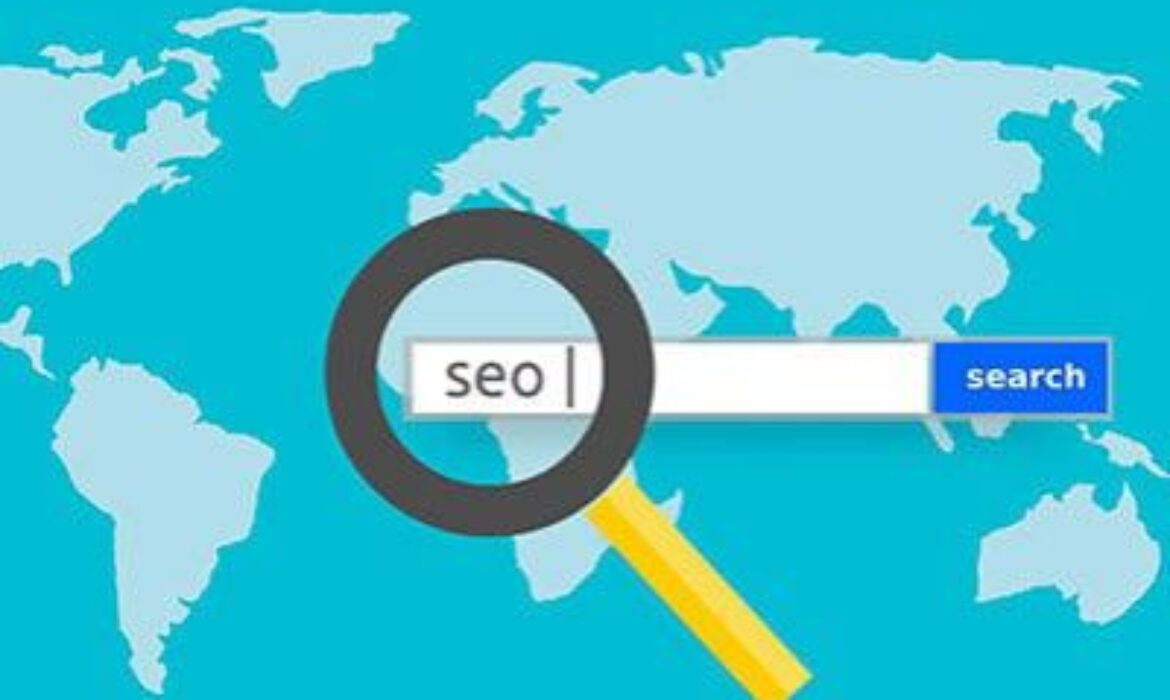The Importance of a Professional Business Website
The Importance of a Professional Business Website
In today’s competitive market, a strong online presence is essential for every business. Your website serves as the face of your company, providing customers with information about your products and services. However, it’s more than just an information hub; it’s a powerful tool for customer interaction and growth.
Whether you’re launching a new website or giving your existing one a makeover, enlisting the expertise of a professional web designer can make a world of difference.
Benefits of Hiring a Professional Web Designer
1. High-Quality Website:
A professional web designer creates a customized website tailored to your business needs. Your site is crafted with your specific goals in mind, utilizing plugins, headers, images, and code to make it both attractive and functional. Unlike free website builders, where certain features are restricted, a professional design ensures top quality.
2. Online Presence and Strategy:
Professional web designers understand the intricacies of SEO (Search Engine Optimization). They build your website with SEO principles in mind, making it SEO-friendly for improved online visibility. Enhanced visibility means more potential traffic, which can translate into increased sales.
3. Utilizing New Technology:
Keeping up with the latest technology is crucial for a competitive online presence. Internet technology and search engine algorithms evolve over time. A professional web designer takes care of updates and maintenance to ensure your site remains compatible with the latest trends, including design, SEO functionality, coding, and more.
4. Convenience and Time Saving:
Professional web designers can integrate essential business features into your website, enhancing convenience for both you and your customers. Features like appointment scheduling, contract forms, online quotations, chatbots, and follow-up messages or emails can be incorporated to boost revenue.
5. Reliability:
Your website’s reliability is crucial. Professional designers ensure it’s free from errors and potential crashes. Should technical issues arise, you won’t have to pay for emergency services to resolve problems.
6. Compatibility:
A professionally designed website is compatible with various devices, including computers, tablets, and smartphones. Accessibility across different platforms is essential for reaching a wider audience.
7. Visual Satisfaction:
Online visitors have short attention spans. A professional web designer ensures that your site’s design is attractive, impressive, and user-friendly, capturing and retaining visitors’ interest.
8. Faster Website:
Professionally designed websites incorporate features for faster loading speeds. A speedy website allows visitors to navigate products, services, or relevant information quickly, potentially leading to more sales.
While hiring a professional web designer may involve upfront costs, the long-term benefits far outweigh the initial investment. Moreover, a professionally built website instills confidence in visitors, establishing trust and enhancing the overall customer experience.
The Ever-Evolving Landscape of Local SEO: A Guide
The Ever-Evolving Landscape of Local SEO: A Guide
Change is the only constant in the world of SEO, and it’s no secret that staying competitive in the market requires a strong and dynamic local SEO strategy. Local search has transformed the SEO landscape, making it more essential than ever for businesses to optimize their online presence for local audiences.
Did you know that as much as 46% of all Google searches are local in nature? What’s more, over 50% of “near me” searches have resulted in physical store visits, and nearly a third of all online consumers in the U.S. search for local businesses on a daily basis. This shift in search behavior underscores the significance of local SEO in today’s digital age.
Building a Successful Local SEO Plan: Where to Begin
1. Register for a Google My Business (GMB) Account
Embarking on a successful local SEO journey starts with registering for a Google My Business (GMB) account. It’s not just about having an account; it’s about optimizing it for maximum results. Here’s how to get started:
- Ensure your address is accurate and complete.
- Be specific about your service area.
- List all relevant business categories.
- Optimize your introduction for a compelling first impression.
- Verify your GMB listing through a PIN sent by Google to your physical address.
2. Optimize Your GMB Listing Continuously
Your GMB profile is a dynamic asset that requires ongoing attention. Providing comprehensive information about your business improves your chances of ranking well in local searches. Here’s what to focus on:
- Accurate NAP (Name, Address, Phone) details.
- Explore all available category options.
- Work on on-page optimization, as it’s a significant ranking factor.
- Consider including your target keywords in your business name for added visibility.
3. Invest in High-Quality Photos
In today’s digital landscape, visuals matter. When potential customers search for businesses on platforms like Google My Business and Google Maps, photos often take center stage in search results. To entice customers to visit your physical store or choose your services, invest in professional photographs and optimize their EXIF metadata. Key metadata to add includes your physical address, geographic location tags, latitude and longitude details, service information, business category, and target keywords.
4. Strengthen Your Citations
Citations continue to play a pivotal role in local SEO, serving two primary functions: validating your business information and driving targeted traffic. Strengthen your online presence by listing your business in prominent and relevant directories in your city or region. Not only does this increase your exposure in the local market, but it also enhances the credibility of your business.
5. Develop a Robust Content Strategy
Content remains king in the digital realm. Relevant content can generate three times as many leads as paid advertisements, making it an essential component of your local SEO strategy. To boost your online visibility, create a diverse mix of content, including informative articles and local SEO-focused content that adds value to your customers’ experience.
By embracing these strategies and adapting to the ever-evolving world of local SEO, you can ensure that your online presence remains strong, resilient, and relevant to your local audience.
The Evolving Importance of SEO in a Post-Pandemic World
The Evolving Importance of SEO in a Post-Pandemic World
SEO, or Search Engine Optimization, can be a complex subject for entrepreneurs and digital marketers alike. Even experts with years of experience find themselves continuously adapting to the evolving landscape of website optimization. In today’s digital age, SEO is not just a marketing tactic; it’s a fundamental aspect of a successful online presence. But why does SEO matter now more than ever, especially in the wake of a global pandemic?
Evergreen Content Holds Its Ground
In recent years, the COVID-19 pandemic has dominated conversations and search queries worldwide. While this unprecedented event has undoubtedly impacted consumer behavior and search trends, one thing remains constant: the power of evergreen content. Evergreen content is information that stays relevant over time, regardless of external circumstances. Investing in such content ensures a steady stream of traffic to your website, irrespective of the current climate or any ongoing pandemic.
When the pandemic becomes a historical chapter, your evergreen content will continue to engage and inform your audience.
Embracing the Era of Multi-Screening
With approximately 90% of Internet users now engaging in multi-screening, it’s evident that people are increasingly utilizing different devices to accomplish tasks. This trend has become even more pronounced as remote work and flexible lifestyles have gained prominence. To remain relevant in today’s digital landscape, your SEO strategy must prioritize mobile-friendliness.
Google recognized the significance of this trend by rolling out a mobile-friendly algorithm update. It’s essential to keep your website optimized for mobile users who expect seamless experiences across all their devices.

Addressing Ongoing Trends
While the COVID-19 pandemic has had a lasting impact, your SEO strategy should adapt without solely fixating on the immediate trend. Instead, consider creating content that relates your business to broader solutions and needs. By focusing on solutions rather than the pandemic itself, your content can maintain relevance long after the trend subsides.
Consistency Is the Foundation of SEO Success
Amid the disruptions caused by the pandemic, SEO strategies must persist. Building trust with search engines is an ongoing effort, and consistency is key to long-term success. Continue to produce valuable content, refine your keyword strategy, enhance your website’s performance, and embrace new SEO tactics to strengthen your campaign.
Regardless of external challenges, your commitment to SEO ensures that you don’t regress to square one.
Leveraging Local SEO Opportunities
In a world where many businesses have faced closures and consumers prioritize nearby establishments, local SEO has become increasingly important. To succeed in this landscape, optimize your website for local searches. Keywords like “open now” and “near me” have gained prominence due to the pandemic, and ranking for these terms can significantly boost your online visibility.
Moreover, as people seek ways to support local and small businesses to aid the post-pandemic economic recovery, local SEO becomes a powerful tool for connecting with your community.
In conclusion, the significance of SEO has not waned; it has adapted to the challenges of our times. Evergreen content, mobile optimization, adaptability to trends, consistency, and a strong focus on local SEO are pillars of a robust SEO strategy in the post-pandemic era. By staying agile and informed, you can ensure your online presence remains resilient and relevant in an ever-changing digital landscape.



